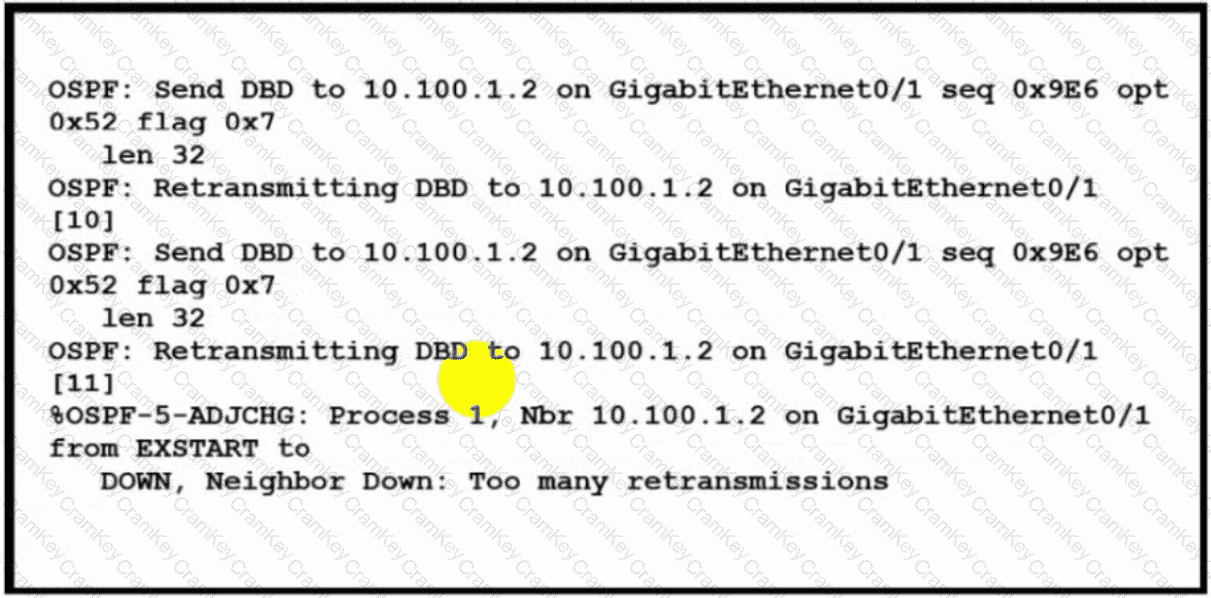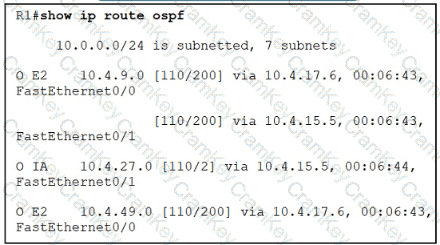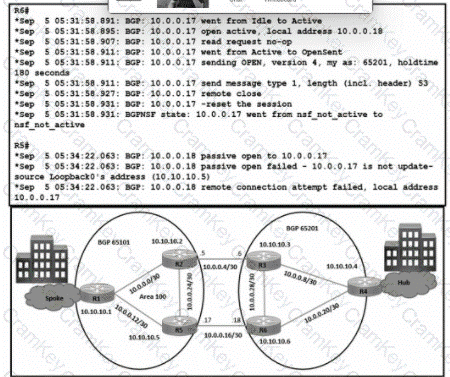| Exam Name: | Implementing Cisco Enterprise Advanced Routing and Services (300-410 ENARSI) | ||
| Exam Code: | 300-410 Dumps | ||
| Vendor: | Cisco | Certification: | CCNP Enterprise |
| Questions: | 594 Q&A's | Shared By: | ria |

Refer to the exhibit. The OSPF neighbor relationship is not coming up What must be configured to restore OSPF neighbor adjacency?
Refer to the exhibit.

An engineer configures two ASBRs 10 4 17.6 and 10 4 15 5 in an OSPF network to redistribute routes from EIGRP However, both ASBRs show the EIGRP routes as equal costs even though the next-hop router 10 4 17 6 is closer to R1 How should the network traffic to the EIGRP prefixes be sent via 10 4.17.6?
An engineer failed to run diagnostic commands on devices using Cisco DNA Center. Which action in Cisco DNA Center resolves the issue?

Refer to the exhibit. The traffic from spoke to hub is dropping. The operations team observes:
R2-R3 link is down due to the fiber cut.
R2 and R5 receive traffic from R1 in AS 65101.
R3 and R5 receive traffic from R4 in AS 65201.
Which configuration resolves the issue?
A)

B)

C)

D)
